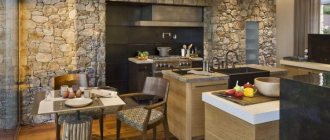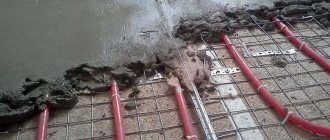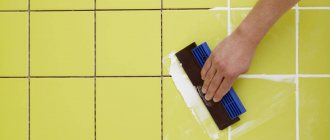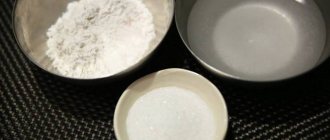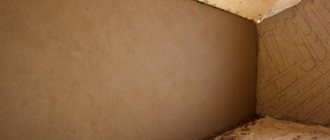Colored cement is concrete painted in one shade or another, using various pigments and techniques. Typically, pure concrete structures have a dull gray color, which is provided by the cement included in the composition. But there are times when concrete needs to be given a different shade or color - in this case, pigments are used.
Colored concrete is used to create paving slabs, various types of paving stones, side stones, stairs, curbs, enclosing structures, decorative sculptures, etc. The popularity of color compositions is growing every day, and therefore new cement paints, methods and methods of coloring, technologies and options are appearing.
Characteristics and properties of pigments
These are powder emulsions or dry substances that do not dissolve in liquid. When they are added, tinting of concrete, all kinds of solutions and polymers is ensured. Typically, pigments are used for painting foundations, borders, various types of tiles, and paving stones. After hardening, the structures do not need to be painted; as the front layer is destroyed, the color of the array is preserved.
Advantages of the solution:
- environmental friendliness and safety;
- economical consumption;
- possibility of realizing any design idea.
But if the pigment is of poor quality, its color may change under the influence of chemicals and solar radiation, and over time it will become more faded and yellowish.
Pros and cons of colored cement
To reduce the cost of facing a room, cement is painted, giving it a decorative appearance. The hardened solution with dye will keep the color unchanged after damage. The advantage of dyes is:
- it is absolutely safe for humans and does not harm the environment;
- economical spending. By using a small amount of pigment, a mass with a rich color is obtained;
- You can give the structures any shade that is needed to realize the design idea.
- Its disadvantages include:
- Over time and under the influence of the sun, the painted surface changes color. It becomes less saturated and a yellow tint forms;
- the use of dyes increases the estimated costs.
Types of dyes
The color scheme is implemented in the form:
- concentrated color paste;
- emulsions;
- powder mixtures;
- small capsules.
Color for concrete in the form of powder mixtures.
Based on the origin of raw materials, substances are classified into:
- natural - ore materials are used in their production;
- synthetic - formed as a result of chemical processing.
The most common bases for dyes are:
- white - created on the basis of titanium dioxide;
- green – from chromium oxide;
- red - from iron oxide;
- black – from carbon monoxide, soot;
- brown - from iron oxide.
Other shades are less practical, for example, blue quickly washes off, fades and fades.
What are pigments?
Pigments are dry substances or emulsions in powder form that do not dissolve in liquid. The product is intended for coloring a variety of liquid compositions: solutions, paints, concrete and various polymers. Most often used for painting building materials made from cement mortar: foundations, paving stones, curbs, facade, paving, and facing tiles. The cement pigment forms a film on top of the material.
Dye for cement mortars is intended to change the standard gray color of the material to any other. The color is sold as:
- powdery substance;
- pastes with concentrated color;
- small capsules;
- emulsions.
Such dyes are often used in the manufacture of paving slabs, curbs, paving stones and other building materials and structures.
Paint for cement mortar differs in the origin of the raw materials:
- natural. It is based on materials mined by the ore method;
- synthetic, obtained during the processing of chemicals.
Criterias of choice
Paint for cement mortar must exhibit certain qualities:
- high covering power. Expressed in the intensity of masking the natural color of the mixture;
- oil capacity. It provides the ability to retain oil-containing compounds on the surface. Typically, this criterion is calculated for 100 g of color; here the optimal level is 40-100 units. As it decreases, the consumption of the additive decreases;
- affordable price even taking into account the brand markup;
- high dispersion. A finely milled formulation produces a more one-dimensional and rich color;
- non-susceptibility to alkaline components present in cement;
- resistance to solar radiation.
Natural pigments practically do not fade under sunlight, while synthetic variations fade faster.
Types of paints
The most common is the acid base for dyes. Their feature is:
- Available in all popular colors;
- used for painting facades and interiors;
- they are applied with sprayers or special brushes;
- the acidic environment is washed off with water after painting the cement;
- The compositions are wear-resistant and fade slightly.
For brickwork, water-based acrylic dyes are used. The acrylic base of the color easily penetrates into the concrete mixture; it does not need to be washed off. The result will be a color-rich surface. When making paving stones, colors are used. The cement mixture with added pigment is poured into molds and dried. The result is paving stones with high permeability.
To make your own acid cement dyes you will need the following ingredients:
- adhesive base;
- color additive;
- solvent.
The ingredients are mixed until smooth. Work with this dye is carried out in protective glasses and special clothing.
Areas of application of colored concrete
Such products are widely used in exterior decoration. The most popular is iron oxide color; it is durable and does not change its rich range. It is in demand in the manufacture of decorative coatings, walls, concrete rings, tiles, and floors. The bright colors are used in the production of borders, decorative stones, fences for flower beds, and paving slabs.
Color for concrete is often used for paving slabs
Recommendations
The user will be interested in additional tips:
- Before applying the solution, the surface should be carefully prepared, otherwise there is a risk of cracks and poor adhesion. It will be useful to learn what concrete contact is;
- Proper preparation and use of cement is the key to surface integrity for a long time. There are many recommendations on how to properly dilute cement to work in various conditions and protect against negative phenomena during operation;
- The composition of the mortar for laying bricks must be prepared taking into account the brand of the block. To create a monolithic building, it is better to select a composition of the same brand;
- Cement-sand plaster is the best way to level walls in apartments, since it is inconvenient to mix cement and there is nowhere to get sand.
Color options
Concrete that does not have slag additives is tinted. Its standard shade is gray in varying degrees of saturation; white is less common. When painting you need to consider:
- the gray base will invariably appear in the final color of the concrete, so it is advisable to initially keep in mind further darkening of the composition against the background of the samples indicated on the pigment marking;
- a dark solution is easier to paint in cool tones of blue, green, and gray;
- pure and light colors are achieved only on the basis of white cement; in this case, light green, beige, pink, and yellow colors can be achieved.
The level of saturation and purity of the final color is determined by coverage and pigment type.
Applying paint to the finished surface
An alternative option for using pigment is to paint ready-made structures with cement.
Features of the method
The difference between the method and the previously described one is the possibility of painting the cement mortar after it has hardened. After pouring the screed or plastering the wall, a kind of paint is applied to the surface. According to the principle of application, the method does not differ from painting metal, wood or plastic. The only fundamental change is a deeper impregnation of the composition.
The quality of colored cement is higher than when processed with conventional paint. The dye penetrates the base deeper, so even if a chip appears, the decorative appearance is not lost. Cement painting provides a change in appearance and provides protection to the finish.
Instructions for use and proportions
The first step is always to choose a color with the optimal shade, and the intensity of the color is determined by the proportions when stirring. Labels on packages contain samples illustrating examples of color in various combinations.
First, the dye is diluted, then it is poured into the cement mortar and the mass is thoroughly processed with a concrete mixer. The coloring composition is especially relevant when added to concrete, from which products with increased cross-country ability, which are subject to intense atmospheric and mechanical influence, will be cast.
Before painting the entire batch of cement, experts recommend organizing testing. If you neglect this rule, the risk of incorrect dosage calculation increases. Therefore, it is important to do a small test batch, the results of which will identify potential problems and find solutions to them.
If you add more pigment than indicated on the package, cracks may form in the finished concrete structure. The fact is that as the color hardens, it absorbs a lot of liquid, taking it away from the Portland cement. In some cases, this negative effect can be prevented by regularly moistening the product with water before the concrete hardens.
If the goal is to obtain a more saturated color, it is worth looking for a pigment designed specifically for such purposes. And in this case, in order to eliminate the negative influence of color, moisture-retaining components and plasticizers are introduced into the mixture. This will ensure proper hydration of the hardening solution.
At the assembly stage, it is important to thoroughly mix the composition to avoid the formation of areas that retain the original gray color, dark spots and streaks.
An alternative method is to paint the concrete after hardening: the surface is covered with a tinting compound, which is absorbed into the upper layers of the mass.
Application of tinting for grout
But it often happens that it is not possible to tint the cement. Then you have to perform pigmentation to match a certain shade of the finished grout on the surface. In order for everything to go right here and the work to come out of high quality, you should adhere to these basic simple rules:
The color of the grout should be as close as possible to the color of the finishing material.
- First you need to select dyes. As a rule, the color will be added to regular grout, which is most often used for the space between tiles or finishing other minor small decorative elements. You just need to take samples of the clear grout and base color of the tiles and bring them to the store. Our specialists will help you choose the best option in terms of color and quality;
- Decide what kind of grout color you want to use. Today there are basic and ready-made tinted epoxy grouts. As you have already understood, basic grouts require additional tinting on top of them, but ready-made grouts simply need to be applied to the surface and wait until everything dries. Don't forget that ready-made grouts cost about 1.5 times more. And in the case of the basic ones, you can even get creative with the shade yourself;
- Before tinting the grout or applying ready-made pigmented epoxy grout, you should prepare the surfaces so that everything adheres well. For these purposes, it is recommended to use a special so-called acid cocktail, which will help clean the surface of unnecessary substances and neutralize it from fungus and mold;
- When tinting the grout, be sure to use a special transparent varnish, which covers the pigment after the material has completely dried. It will help protect the color of the grout even better and keep it in its original form for many years.
So, the main features of working with a color for cement, as well as the application and selection of a color for grout, are fully considered.
If you follow all the above rules, you will be able to achieve an excellent effect and use cement dye correctly.
Popular manufacturers of concrete colors
Hundreds of companies supply mortar paint, with three leading brands being Bayferrox (Lanxess), Cathay Industries and Precolor.
Bayferrox (Lanxess)
Iron oxide pigments from a German manufacturer are of high quality. They contain dispersants, which are responsible for uniform coloring of the mortar, due to which the entire structure acquires a uniform shade. The product is significantly ahead of competitors in terms of wear resistance; it does not contain dust fractions.
Cathay Industries
The Chinese line is resistant to ultraviolet radiation, temperature changes, and alkaline environments. Pigments perfectly retain color intensity during long-term use of concrete.
Precolor
Czech colors have a wide palette of durable shades; product quality is regulated by European standards. The pigments do not contain toxins, which guarantees their safety.
Adviсe
Advice for users will be as follows:
- before diluting the pigment, it must be sifted through cheesecloth, and the solution must be strained;
- you need to know the compatibility of pigments, as some do not combine;
- burnt bone, red lead, chromium oxide, umber are mixed with all dyes;
- adding pigment to the cement mixture is carried out until the color intensity stops, this is about 4-5% of the cement mass, there is no point in adding further, otherwise it can cause harm by reducing the strength characteristics of the solution.
Painted masonry mortar looks beautiful. There is a contrast between the seams and the bricks, improving its perception. This option is suitable for indoor and outdoor masonry.
How to make a color for concrete yourself?
To make a color scheme with your own hands, the easiest way is to use perchloric acid pigment: this compound is the leader in stability and durability among similar dyes.
Required Components
You should prepare:
- 500 g lime pigment;
- 1.5 liters of fluff lime;
- 7 liters of clean water;
- 200 g calcium chloride;
- 30 g of ordinary laundry soap.
To make a color for concrete, you will need fluff lime.
The last ingredient must be crushed using a coarse grater.
Preparing the color
Paint and lime are diluted in water, and calcium chloride is added to the mixture. Laundry soap is dissolved in a small amount of warm water and added to the main solution, mixed and filtered through folded gauze. The color scheme is ready, next you need to mix the cement mortar.
Mixing dye with cement
Before painting the cement mortar, a color scheme with the desired color is selected. The shade changes depending on the mixing ratio. Packages usually indicate a color sample for various proportions. After final mixing, the dye for the solution is added to the finished mixture, then it is thoroughly mixed, preferably with a concrete mixer. The result is the most durable color possible.
The coloring composition for cement mortar is used to add to concrete with strong atmospheric and mechanical influences and increased trafficability.
There are several important characteristics of the coloring composition; they are taken into account before painting cement:
- resistance to fading for a long time;
- protection from moisture. The composition should not be washed away, dissolved or washed off with water;
- immunity to alkaline liquids;
- long-term color retention.
DIY colored cement
You can prepare colored concrete or colored mortar on your own. The main condition is to maintain proportions and use clean white sand and clean water. To obtain a highly saturated color with a minimum amount of added pigment, white Portland cement should be used.
Gray general construction Portland cement “muffles” the brightness of the shades, giving the products pastel tones. It is worth noting that the use of white Portland cement significantly increases the cost of the final product.
Judge for yourself, the average cost of a 50-kilogram bag of white cement ranges from 700 to 1044 rubles, while a bag of regular cement costs from 290 to 345 rubles for one bag weighing 50 kg.
Next, we will tell you how to make a colored cement mortar for the construction of garden paths, small areas, sidewalks and other light-loaded structures:
- Proportions of components: Portland cement 1 part, white purified sand 2.5 parts, washed granot sieving 4 parts, clean water 0.3 parts, color 5-10% by weight of cement. Practical advice! There is a limit to color saturation. In other words, there is a certain threshold of the amount of color added, when adding another portion no longer affects the brightness of the shade. Moreover, this leads to an increase in cost and a harmful phenomenon - moisture withdrawal (in some cases this will deteriorate the quality of the product). The percentage of dye indicated above is the so-called “threshold”.
- High-quality colored building material will be obtained provided that the components are evenly mixed. Therefore, a concrete mixer should be used to prepare colored concrete. First, sand and gravel are loaded into the concrete mixer. Mix and add cement. Mix again and add dye. The concrete mixer is left turned on until the mixed mass acquires a uniform color.
- Add water in small portions while mixing the components. Water is added until the required consistency of concrete (mortar) is obtained.
- Colored concrete (mortar) is ready for use.

